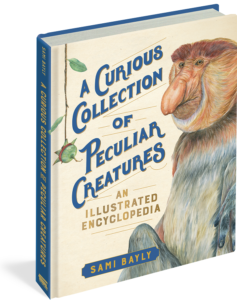 Our favorite animals are often the cuter species in the animal kingdom, or the ones with skills and talents that fascinate us (I’m looking at you, tigers, penguins, and elephants). Because they’re our favorites, we care deeply about them, and many of us are invested in the wellbeing of their species—we pay attention to their struggles and triumphs, and can often rattle off facts that we’ve sought out, or at the very least, learned in passing.
Our favorite animals are often the cuter species in the animal kingdom, or the ones with skills and talents that fascinate us (I’m looking at you, tigers, penguins, and elephants). Because they’re our favorites, we care deeply about them, and many of us are invested in the wellbeing of their species—we pay attention to their struggles and triumphs, and can often rattle off facts that we’ve sought out, or at the very least, learned in passing.
But not every animal is as cute as an otter, or as wise as an owl. This begs the question: Who is invested in the wellbeing of some of the less “conventionally attractive” creatures in the animal kingdom?
Author and (ultra-talented) illustrator Sami Bayly wanted to highlight these very animals—the creatures that don’t attract the same kind of awe and appreciation as their cuter counterparts—or that actively repel it! She wrote and illustrated A Curious Collection of Peculiar Creatures on the basis that every animal, regardless of it’s features, is worthy and deserving of love. But even beyond that, Bayly hopes to call attention to the fact that many of the animals featured in her collection are actually endangered.
To raise awareness about these bizarre, weird, but no less fantastic animals, we’re sharing some of our favorite facts about a handful of creatures in the book (alongside their pictures, of course). Read on to find out more about some of the stranger species, and learn why we should care about these often-overlooked animals.
***
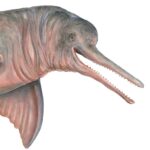 Amazon River Dolphins have melons on their heads—literally! The large bump on their head is called a melon, and is used for echolocation. By sending out clicking sounds that bounce back through the water, these dolphins can easily find prey and navigate the murky waters of the Amazon. (Bonus fact: these dolphins can turn their heads 90 degrees in any direction!)
Amazon River Dolphins have melons on their heads—literally! The large bump on their head is called a melon, and is used for echolocation. By sending out clicking sounds that bounce back through the water, these dolphins can easily find prey and navigate the murky waters of the Amazon. (Bonus fact: these dolphins can turn their heads 90 degrees in any direction!)
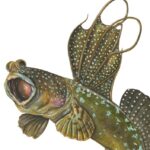
Atlantic Mudskippers have pectoral fins shaped like limbs, which let them walk over rocks and sand. They are even known to climb up the roots of Mangrove trees! Their tail is long and very strong, which helps them move around on land, also.
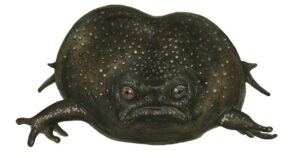 Black rain frogs came up with a clever way to trick predators: after females lay their eggs in their burrow, they lay another set of eggs on top of them—but these eggs are empty! When predators come to raid the burrow for eggs, they’re more likely to eat the empty eggs, and the ones with babies in them are more likely to survive.
Black rain frogs came up with a clever way to trick predators: after females lay their eggs in their burrow, they lay another set of eggs on top of them—but these eggs are empty! When predators come to raid the burrow for eggs, they’re more likely to eat the empty eggs, and the ones with babies in them are more likely to survive.
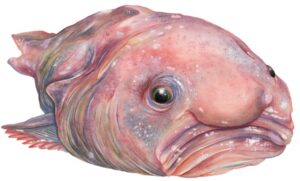 The blobfish, though it might not look like much, is very impressive. It is often found at depths 2.5x deeper than submarines can reach! This is the reason it looks the way it does—blobfish evolved to survive under very strong water pressure, and it doesn’t need muscles or bones since the pressure is so high. (Bonus fact: blobfish can live to be 130 years old!)
The blobfish, though it might not look like much, is very impressive. It is often found at depths 2.5x deeper than submarines can reach! This is the reason it looks the way it does—blobfish evolved to survive under very strong water pressure, and it doesn’t need muscles or bones since the pressure is so high. (Bonus fact: blobfish can live to be 130 years old!)
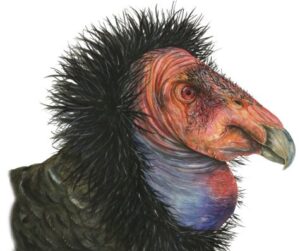 The California condor is such a good flier that they can glide on the wind for up to an hour without needing to flap their wings once. Sometimes, they eat so much in one meal, though, that they can’t fly for several hours afterwards.
The California condor is such a good flier that they can glide on the wind for up to an hour without needing to flap their wings once. Sometimes, they eat so much in one meal, though, that they can’t fly for several hours afterwards.

To learn even *more* about these animals and their wacky colleagues, be sure to pick up a copy of A Curious Collection of Peculiar Creatures on November 3! Once you do, tweet us @experimentbooks to let us know which is your new favorite!


